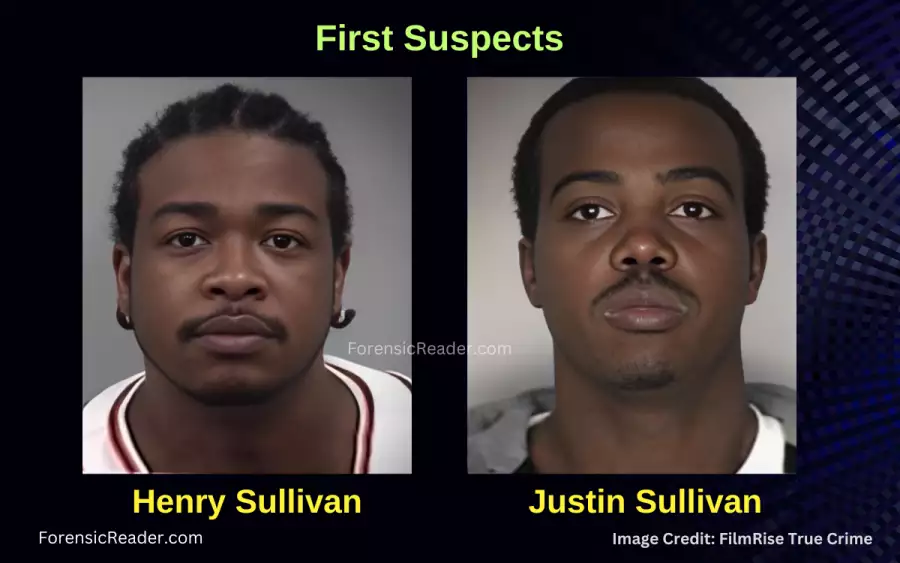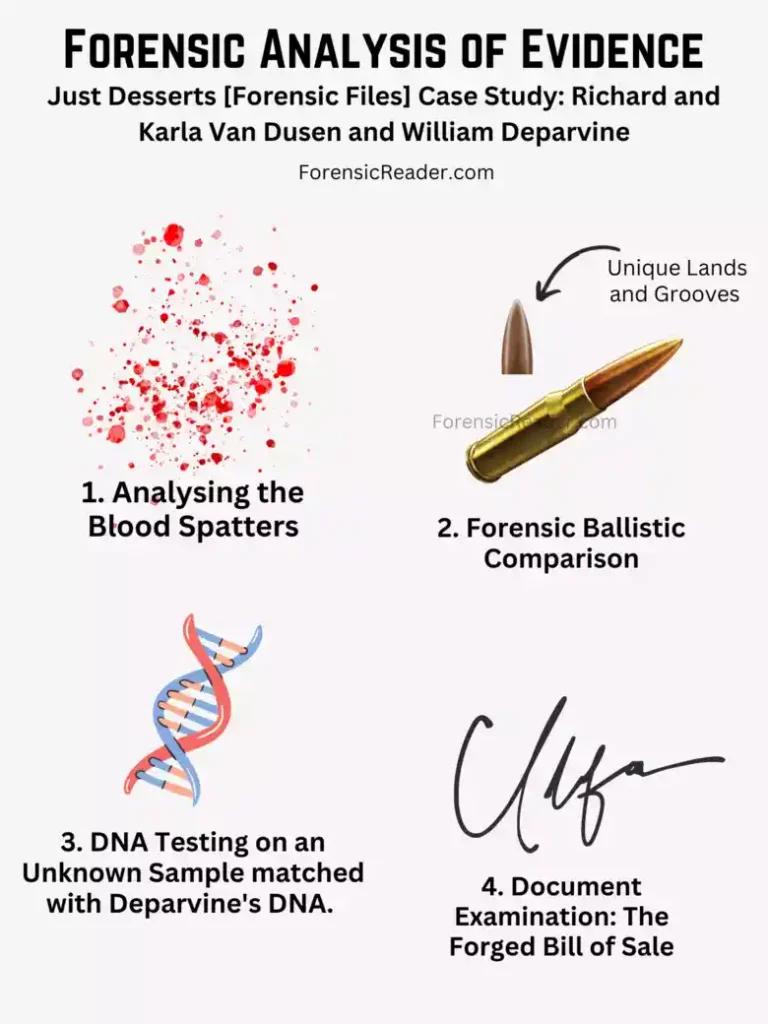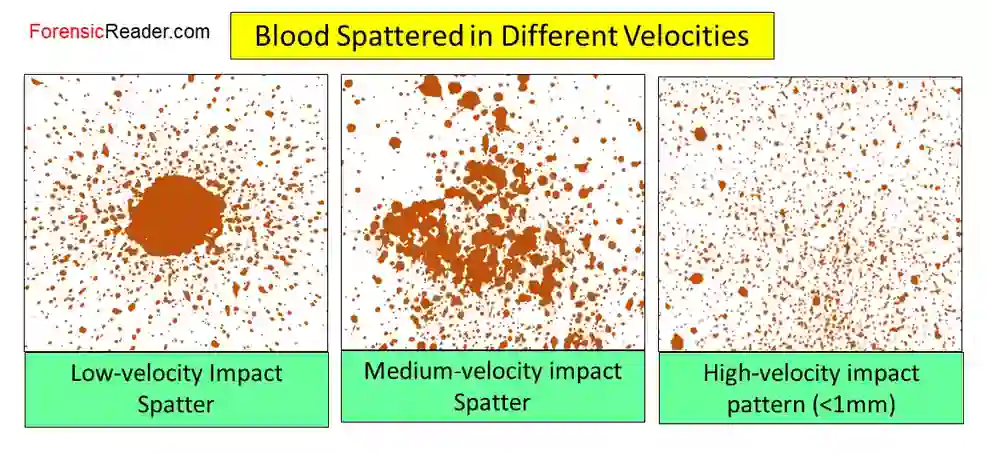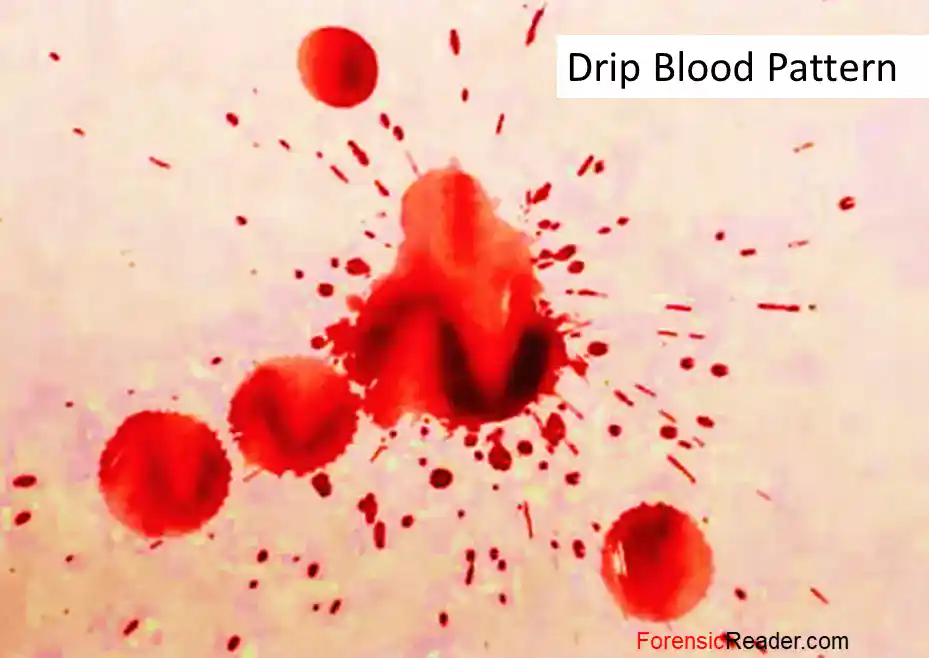Truth hides in details. This case of couple Richard and Karla Van Dusen, and William Deparvine is a powerful reminder. It shows how science, hard work, and careful investigation can uncover the truth, even when things seem confusing.
Summary of Just Desserts Forensic Files Case of Richard, Karla Van Dusen, and William Deparvine
| Field | Case Information |
|---|---|
| Date of Incident | November 2003 |
| Region and Location | Tierra Verde, Florida |
| Forensic Files Case | Just Desserts (Season 11, Episode 3) |
| Victim | Richard and Karla Van Dusen |
| Suspects | Henry Sullivan, Sullivan’s Brother Justin, William Deparvine |
| Culprit | William Deparvine |
| Type of Crime | Double Murder, Theft |
| Forensic Evidence | Blood spatter, saliva from spoon, forged sales bill, tire marks, shoe prints |
| Forensic Techniques Used | DNA testing, Blood-spatter analysis, Document examination, Fingerprint examination |
| Charged For | Double Murder |
| Punishment | Double life sentence (after 15 years on death row) |
| Where is Now | Florida’s General Prison |
November 2003, St. Petersburg, Florida, a day before Thanksgiving: A Jeep, eerily abandoned near a shop, caught the attention of locals. The Jeep belonged to Richard and Karla Van Dusen, a couple with two different lives.
Richard was a passionate antique car collector and a copy-machine sales manager. Karla was a courtroom reporter who had a unique weekend gig: she worked as a clown, bringing joy to sick children in hospitals.
Inside the Jeep, there was no one except Karla’s cell phone and purse, on the front seat with lots of blood, hinting at a possibly violent event.
Nearby, a driver’s license was found, pointing fingers at a 32-year-old, Henry Carlton Sullivan. However, he had no words for why his driving license was at the crime scene.
“I Lose my I.D.s all the time”
Sullivan said
Police also suspect Henry’s brother Justin might involve in the crime.

Investigators check the driver’s license and seat belt for fingerprints. But had no luck. There was only one crucial piece of evidence, at least at first, a .9-millimeter bullet on the car’s floor.
From crime scene reconstruction, it seemed, Richard was pulled out and shot outside while Karla was shot from the windshield when she was belted on the car seat.
But Sullivan got in trouble when cops recovered two .9 mm of pistols from his apartment. One of which was only working.
Forensic examination bullet of land and grooves: Test slugs were compared and they were fired from different firearms.
But. But. But… In the parking lot, there was a Van Dusen pickup truck.
And here comes the twist–more the culprit–William J Deparvine, an ex-convict.
Soon from nowhere Willam Deparvine approached investigators and told them he bought the truck from Richard Van Dusen. Deparvine, with his criminal past, seemed an obvious suspect. Yet, the tale was more intricate than it appeared.
But where did Deparvine fit in? Things got complicated when Deparvine’s story clashed with a phone call Karla made to her mom, Billie Farris, that evening.
Meanwhile, more evidence surfaced: blood in the Jeep suggested the killer got injured while moving Karla’s body. First, the test was made against Sullivan and came to be negative.
Cops asked Deparvine to submit their DNA sample.
Deparvine refuses
That makes getting a sample hard. It took weeks and a dozen manpower. One day, an unexpected DNA sample emerged from a discarded spoon. The spoon had Deparvine’s saliva that he dumped in the bin after having an ice cream.
DNA tests concluded that the blood on Van Duen’s jeep was Deparvine. He was arrested and charged with double murder.
But Why? What’s the motive? A vintage red 1971 Chevrolet Cheyenne truck. Richard was selling it, and Deparvine was interested. The police believed Deparvine wanted that truck so much, he was ready to commit a crime.
The courtroom was tense. Deparvine insisted he was innocent and took the stand in his own defense. But the evidence was too strong.
After three hours of discussion, the jury declared him guilty. Initially sentenced to death, a legal twist gave Deparvine another chance.
A U.S. Supreme Court decision said death penalties needed a unanimous vote. Deparvine’s sentence wasn’t unanimous. So, a new jury gave him a double life sentence instead.
Who were Richard and Karla Van Dusen?

In the picturesque beach town of Tierra Verde, just outside St. Petersburg, lived a couple with unique passions– Richard and Karla Van Dusen.
Richard Van Dusen:
- Profession: Copy-machine sales manager.
- Passion: Antique car collector.
- Lifestyle: Led a quiet, unassuming life in the scenic beach town of Tierra Verde.
Karla Van Dusen:
- Profession: Courtroom reporter.
- Weekend Hobby: Worked as a clown.
- Lifestyle: Brought smiles and joy to sick children in local hospitals, showcasing her compassion.
Their lives, rich with love and hobbies, made them well-known in their community.
Who was William Deparvine? And His Punishment?

William Deparvine had a criminal past long before the Van Dusen case. He served 9 years due to a weapons possession charge. Deparvine was again held for double homicide with a link to the vintage Red Chevrolet Cheyenne truck. Richard Van Dusen had one for sale, and Deparvine expressed keen interest.
Claims and Conviction:
- Innocence: Despite the mounting evidence, Deparvine consistently claimed he was innocent.
- Initial Sentence: His claims fell on deaf ears. He was charged with a double homicide. In 2006, a jury, through a non-unanimous vote, was sentenced to death.
Legal Shifts and Final Verdicts:
- Change in Law: Florida’s death penalty law underwent a significant change. The U.S. Supreme Court mandated unanimous jury votes for death penalties.
- Impact on Deparvine: His original sentence wasn’t unanimous. This legal shift gave him a chance for sentence reconsideration.
Final Verdict:
- 2022 Decision: After a long 15 years on death row, a new jury convened. Their decision? A double life sentence for William Deparvine.
- Currently serving his life sentence in a prison facility in Florida.
Reasons Why William Deparvine Killed Richard and Karla Van Dusen?
The tragic deaths of Richard and Karla Van Dusen left many in shock, but as the investigation unfolded, the motives behind the crime became clearer. Let’s delve into the reasons:
Reason 1: The Vintage Chevrolet Cheyenne Truck
- Main Attraction: The main reason behind this case was a red vintage 1971 Chevrolet Cheyenne truck. Richard Van Dusen had lovingly restored this vehicle and was looking to sell it.
- Deparvine’s Interest: William Deparvine had shown keen interest in this truck. It wasn’t just any vehicle; it was a symbol of prestige and a collector’s dream.
Reason 2: Shortage of Money for Deal
- The Deal: Richard and Karla had a classic red Chevrolet Cheyenne truck up for sale.
- The Discrepancy: While Deparvine claimed he bought it for $6,500, evidence hinted that Van Dusens had another buyer offering $13,500.
Reason 3: Crime of Opportunity
- Isolated Meeting: The Van Dusens, in their trust, might have met Deparvine in a secluded location for sale, providing him an opportunity.
- Unforeseen Tragedy: What might have started as a simple transaction turned deadly, leading to the unfortunate demise of the couple.
Reason 4: A Darker Motive–The Urge to Kill
- Chilling Insight: Some believe it wasn’t just about the truck. Deparvine might have been on the hunt for a victim.
- Psychological Profile: Labeled a psychopath and sociopath by federal investigators, this wasn’t just a random act.
Reason 5: Other Possible Motives
- Quick Profit: The allure of making a quick profit from the sale of the truck might have been too tempting for Deparvine.
- Misdirection: Planting another man’s driver’s license at the scene? A bold move by Deparvine.
- Forgery: He crafted a fake bill of sale for the truck, trying to paint the transaction as legit. This document further solidified the financial motive.
Forensic Evidence In Just Dessert Case of William Deparvine
| Evidence Type | Forensic Importance to the Case |
|---|---|
| Blood Spatter Analysis | Richard shot outside and Karla inside the Jeep. |
| Driver License | Henry Sullivan’s driver’s license near an abandoned car at the crime scene. |
| .9-millimeter Bullet | Found in the victims’ Jeep, suggesting the murder weapon. |
| .9-mm Pistols | Two 9-millimeter pistols were found in Henry Sullivan’s apartment. |
| Unknown Blood | Unknown blood sample in Jeep, possibly by the killer when he was cutting the seat belt. |
| Saliva on a Spoon | Saliva on a discarded spoon and blood from Jeep matched Deparvine. |
| Shoe Prints | Matched with the shoes of Deparvine. |
Forensic Experts and Investigators in the Case With Roles
| Forensic Experts/Investigators | Role in the Case |
|---|---|
| Robert H. Shrader | Criminal Investigation Division |
| J.R. Burton | Criminal Investigation Division |
| Kimberly A. Cashwell | Latent Print Analyst |
| Erica Henderson | Firearms Analyst |
| Melissa Suddeth | DNA Analyst |
Forensic Techniques Used in the Forensic Files Just Desserts Case

1. Blood-Spatter Analysis
Using blood spatter analysis helps forensic experts to know the differences in how blood impacts the surface and the speed through which it hits the target.
They can tell you the earlier condition and a blood spatter is made. Example: The pattern of blood spatter indicated:
- The manner and place where Richard was shot.
- Similarly how Karla was shot.
In other words, blood spatter is mainly used to reveal the truth during the crime scene reconstruction.
Here is the image of how blood spatter seems in different case scenarios.

Similarly, in another example, in this case, most of the blood due to the bullet caused back spatter bloodstains and it was a clear incidence of the high-speed projectile.
On the other hand, the blood drop from the Deparvine finger was different and it was a sign of free failing blood which makes an elliptical shape to the surface.

2. Fingerprint Detection Test
In this case, there were two instances where fingerprints were checked. One was for the driver’s license and the other was for the seat belt.
For developing fingerprints on the driver’s license, the powder dusting method was used. There are different types of fingerprint powder that can be used for developing it. The license has a white background, so black powder was used to develop prints. But no fingerprints were found on it.
Similarly, investigators also checked the fingerprints on the seatbelt. For this, they use some kind of “in-hydrant developer” but also had no luck.
In general, for developing fingerprints on light-colored clothing, liquid-based fingerprint developing techniques are used such as ninhydrin or fuming.
3. Forensic Ballistic Comparision
Investigators were only able to recover two pistols and none of them were matched.
Instruments used: Comparision microscope and Firing tank (for getting standard comparison sample)
By checking the lands and grooves marking on the bullet surface, forensic ballistic experts concluded that the slug from the Jeep wasn’t fired from Henry Sullivan’s pistols. [Check another case: How does a 20-year-old bullet solve a case?]
4. DNA Testing
DNA is like our genetic fingerprint. No two people (except identical twins) have the exact same DNA.
In This Case: Forensic experts took samples from the crime scene. These samples were then compared to Deparvine’s DNA.
The Revelation: The DNA samples from the scene matched Deparvines, making it a significant piece of evidence against him.
5. Document Examination: The Forged Bill of Sale
Forging a document isn’t just about copying a signature. It’s about mimicking the nuances of someone’s handwriting. And there is a high chance that a forged sign can easily be detected by an experienced forensic document examiner.
In This Case: A bill of sale for the truck was discovered. It had Richard Van Dusen’s supposed signature.
The Truth: Experts determined the signature was forged. This not only pointed to a motive but also showcased Deparvine’s intent to deceive.
Read Similar Case: Killer’s Cattle Log Scam [Forensic Files] Case: Ray and Faye Copeland Case
6. Physical Evidence Analysis
A. Tire Marks: Vehicles leave unique imprints. This is based on the theory that with time each tire tread worn off makes them unique. The tire marks from Deparvine’s owned red vintage Red Chevrolet Cheyenne truck were compared to those at the crime scene. They matched.
B. Shoeprints: Just like our feet, shoes have unique patterns. Shoes confiscated from Deparvine’s residence matched prints found near the Van Dusen Jeep. [Read More: Photographing Shoe & Tire Marks on Snow With Highlighting Materials]
The Conclusion: These two pieces of evidence, link William Deparvine to the crime scene and he can’t be denied it.
My Thoughts on the William Deparvine Case
Van Dusen’s was a great couple. They were happy. Karla had a unique passion for gifting happiness to sick children. While Richard loves to have antique cars– a love that most men have.
Both were great but the greed of another man–William Deparvine ends it all. The allure of the red vintage truck and his past criminal records somehow, I believed, created a deadly mix.
I have read many cases where many crimes stem from an urge or greed to have a materialistic thing that someone has.
He also thought he outsmarted the system but the case is a reminder that every piece of evidence, no matter how conclusive it may seem, requires thorough scrutiny.
General FAQs
Who were Richard and Karla Van Dusen?
Richard and Karla were a couple from Tierra Verde. Richard collected antique cars and worked as a sales manager, while Karla was a courtroom reporter and weekend clown, entertaining sick children.
How is William Deparvine linked to the case?
Deparvine, an ex-convict, claimed he bought the Van Dusens’ Chevrolet Cheyenne truck from Richard. Forensic evidence including DNA, a forged bill of sale, and shoe prints, linked him to the crime scene and the murders.
What role did the Chevrolet Cheyenne truck play in the case?
The Chevrolet Cheyenne truck was central to the case. Richard Van Dusen was selling this vintage vehicle, which Deparvine desired. The police believed Deparvine’s intense interest in the truck motivated the crime.
How did the police initially link Henry Sullivan to the crime?
Henry Sullivan’s driver’s license was found near the abandoned Jeep, making him an initial suspect. However, despite the discovery, he couldn’t explain its presence at the crime scene, merely stating he often lost his IDs.
What evidence suggested the killer got injured during the crime?
Blood found in the Jeep hinted that the murderer might have injured himself, possibly while moving Karla’s body. This blood was later matched to Deparvine through DNA testing.
How did investigators obtain Deparvine’s DNA?
Deparvine initially refused to provide a DNA sample. However, investigators later obtained a sample from a discarded spoon with his saliva, which he left behind after eating ice cream.
Why was Deparvine’s death sentence reconsidered?
A U.S. Supreme Court decision required unanimous jury votes for death penalties. Deparvine’s sentence wasn’t unanimous, leading to a double life sentence.
References:
- Watch the full case of Forensic Files Season 11, Episode 3 – Just Desserts. [Youtube]
- Case General History [Fandom.com]
- Forensic Criminology by Wayne Petherick, Brent E. Turvey, Claire E. Ferguson · 2009.
- DEPARVINE v. STATE (2008) [Findlaw]

FR Author Group at ForensicReader is a team of Forensic experts and scholars having B.Sc, M.Sc, or Doctorate( Ph.D.) degrees in Forensic Science. We published on topics on fingerprints, questioned documents, forensic medicine, toxicology, physical evidence, and related case studies. Know More.

